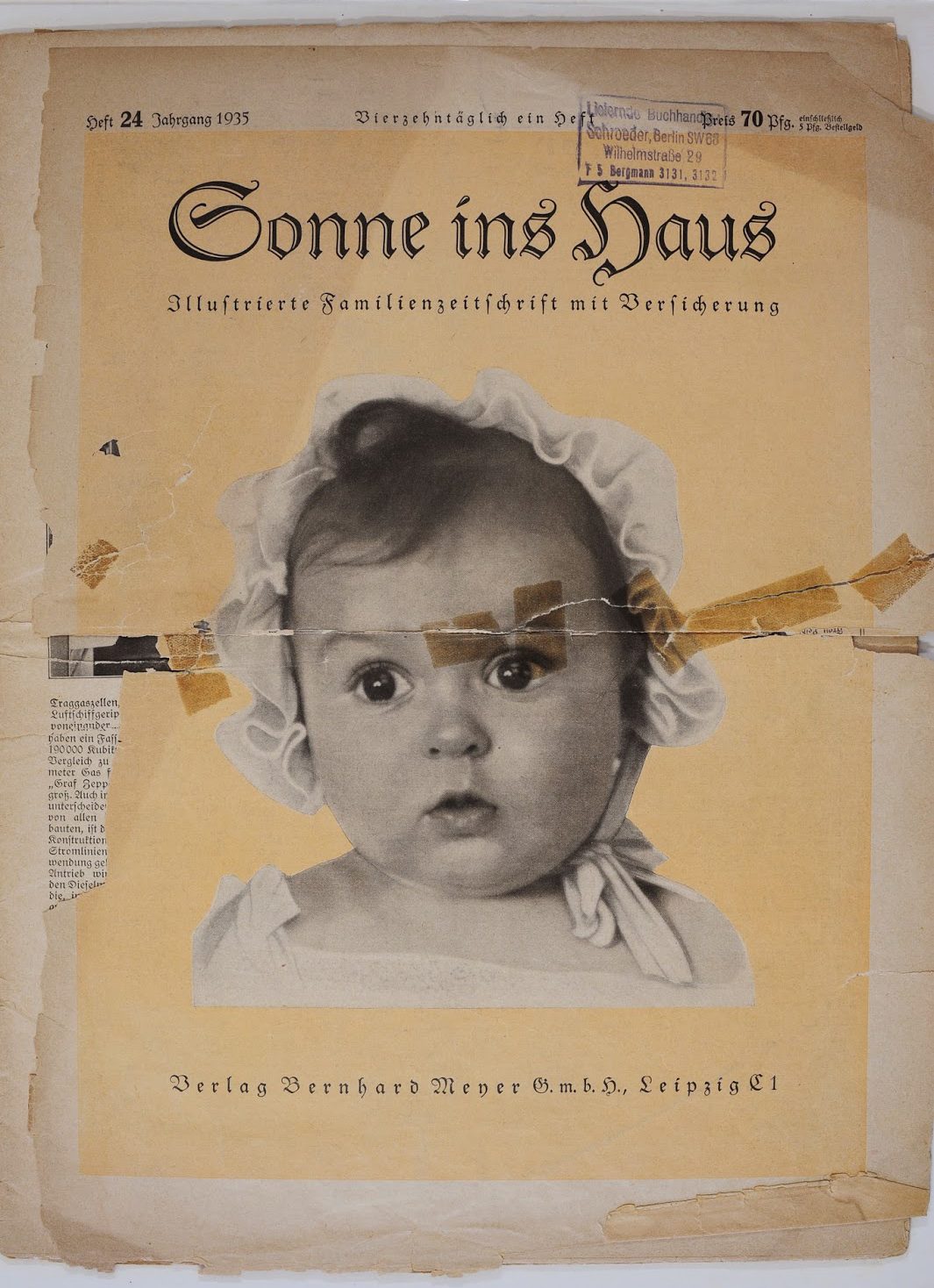In June 2014 Hessy Taft (nee Levinson) visited Yad Vashem with her husband to present a unique gift to the Archives. While recounting a rare story that occurred to her as a baby, Hessy handed an original issue of the Nazi family magazine "Sonne ins Haus" (Sunshine in the House) with her baby picture on the front cover to Yad Vashem's "Gathering the Fragments" campaign. The following summarizes her remarkable story:
Hessy Taft (nee Levinson) was born in Berlin in 1934 to Jewish parents Jacob and Polin Levinson who were originally from Latvia. After studying music the two married in 1928 and later immigrated to Germany.
Hessy explained how her father became a representative for a farm-based firm after being discriminated against due to antisemitism:
"Living in Berlin, both my parents were going to be opera singers. However, when they found out that my father was Jewish they canceled his contract."
In 1935, Hessy's mother and aunt took six-month-old Hessy to be photographed in a professional studio by Hans Ballin, a well-known German photographer in Berlin. Seven months later the Levinson family housekeeper told Polin that she saw Hessy's picture on the cover of a popular Nazi family magazine "Sonne ins Haus" (Sunshine in the House). The photograph had been selected in a contest from an assortment of a hundred pictures of babies in Germany by ten well-known German photographers. The contest had been arranged by the Nazi propaganda department headed by Joseph Goebbels in which entries for the winning picture would depict the ideal beautiful German Aryan baby that would appear on the cover of the magazine.
It turned out that the photographer, unbeknownst to the Levinson family, along with his submission of 10 other pictures, had thrown in Hessy's baby photo as well which ended up winning the contest. The irony of the fact that a Jewish baby had won a Nazi propaganda contest designed to showcase the ideal Aryan child set up by the office of Goebbels was not lost on Hessy's mother who later said: "I wanted to allow myself the pleasure of the joke." Hessy's photo was also later redistributed on postcards throughout Germany and even made it as far as present day Lithuania.
When confronted with the question regarding what she would say today to the photographer who entered her picture in the contest Hessy responded:
"I would tell him, good for you for having the courage."
After fleeing Germany to Paris in 1938, the family later escaped France in 1941 and fled from the Nazi occupied north to Vichy France and from there through Spain and Portugal before boarding a ship to Cuba. After years in Cuba, in 1949 the family immigrated to the United States despite being committed Zionists.
"My strongest memory from childhood was running away. My father told me once that when there would be a Jewish state there would be no more running away."
Hessy studied chemistry at Barnard College and Columbia University and in 1959 married Earl Taft with whom she has two children and four grandchildren. After a long career in the field of standardized testing, today she is a professor of chemistry at St. John's University.
While her immediate family survived the Shoah, most of her family members in Latvia were murdered by the Nazis and their collaborators. Upon being asked how she felt about being a Jewish poster child in a Nazi propaganda magazine she said: "I feel a sense of revenge, good revenge."
The magazine was donated as part of Yad Vashem’s Gathering the Fragments campaign, which encourages people with Holocaust related material in their possession to bring them here to Yad Vashem, where they will be protected for posterity, along with the stories behind the items, and also join all the other material in the Yad Vashem collections, so that together all these fragments of information can tell a fuller story.
"Personal stories, told through items such as letters, artwork, diaries and more add a critical dimension to Holocaust commemoration and education," said Yad Vashem Chairman Avner Shalev. "That is why we are urging people who may have Holocaust-related material in their possession to bring them to Yad Vashem, where they will be preserved for generations to come."
Since the beginning of this program in 2011, some 120,000 items have been brought to Yad Vashem, including photos, documents and artifacts. People who want to donate material should email collect@yadvashem.org.il or call 02 644 3888.




